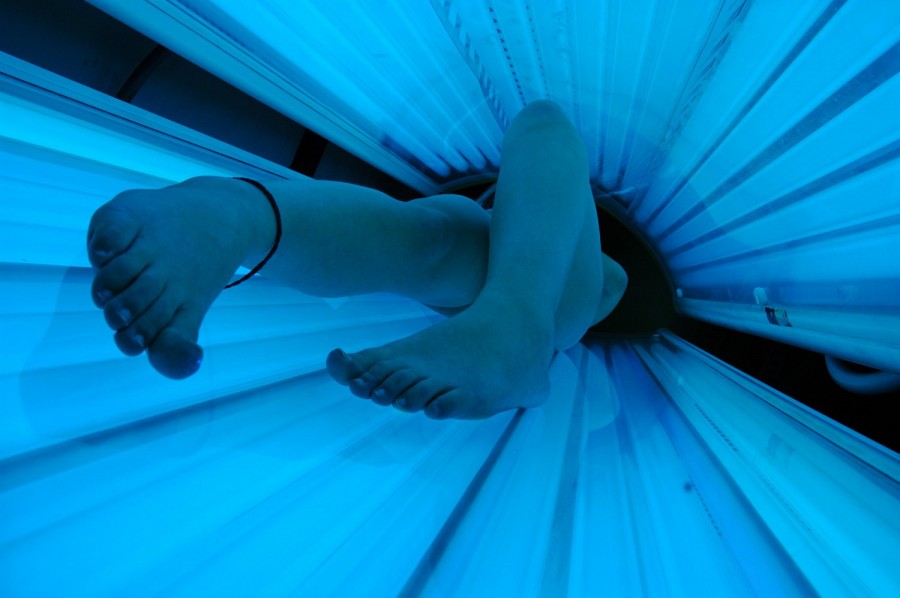In search of the elusive healthy tan
With summer just around the corner, a “sun-kissed” glow is in high demand for many. Of course, there are a few ways to achieve this decidedly desired golden tan. Options can include anything from sunbathing to tanning beds to spray tans and lotions or even makeup to get this classic style. Though, the real debate may be, is sunless tanning the healthiest and most effective way to achieve this ideal summer look?
Sunless tanning has been around almost as long as the invention of sunscreen, with a good 50 years to its name. Self-tanners don’t expose you to harmful ultraviolet (UV) rays, as tanning beds do, nor will they burn your skin. In fact, the FDA has approved the chemicals used in spray tans and dermatologists actually recommend sunless tanning over traditional outdoor sun tanning. So why are so many people skeptical of using this form of tanning?
Perhaps this cynicism can be attributed to lack of knowledge about the topic. Self-tanners are commonly sold as lotions and sprays, most of which contain the chemical dihydroxyacetone or DHA. The chemical reactivates dead cells in the skin’s surface, temporarily darkening the skin.
While the FDA has approved DHA for external application, there is a concern regarding its effects if someone were to accidentally inhale the chemical. There hasn’t been enough research conducted to fully determine if this kind of exposure could be dangerous. Even so, it has been found that ingesting high levels of this chemical (much higher than found in over-the-counter tanning products) can induce free radical formation and cause cancer. For that reason, it’s crucial that proper precautions are taken when applying the spray. The FDA recommends that while using the spray, you should wear goggles and nose plugs to protect your eyes and nose, and wear a mask over your mouth so that you don’t accidentally breathe in the product. Of course, using a self-tanning lotion could help you avoid these problems entirely.
While self-tanners can be risky if used improperly, other forms of tanning are much more hazardous to your health. Sunless tanning pills (they seem to have invented a pill for everything nowadays, haven’t they?) usually contain canthaxanthin and are considered to be very dangerous, and are not advised by doctors or dermatologists. This pill is also difficult to control in terms of desired color as well. When taken in large doses, canthaxanthin can turn the skin orange or brown and can cause hives, liver damage, and severe vision impairment.
Indoor tanning also poses a huge risk for contracting the deadliest form of cancer, melanoma, as well as other skin cancers, from being in contact with UV rays. “There is no question that ultraviolet exposure is associated with an increased risk of melanoma,” said David Fisher, chairman of dermatology and director of the melanoma program at Massachusetts General Hospital. Basal cell carcinoma and squamous cell carcinoma are two other skin cancers known to be caused by overexposure to UV rays. According to the CDC, indoor tanning is especially dangerous for young users, as it can lead to higher chances of contracting these types of cancers. A 2007 study published in the International Journal of Cancer found that there was a 75 percent boost of melanoma risk in those who used tanning beds before age 35. The CDC added, “Indoor tanning is designed to give you high levels of UV radiation in a short time. You can get a burn from tanning indoors…even a tan indicates damage to your skin.”
According to the Huffington Post, recent research has suggested that even traditional sun tanning can impose these dangers. Tanning in the sun is known to cause skin cancer, cataracts, immune system suppression, and premature aging. A study administered in 2010 found that if you aren’t reapplying your sunscreen every 30 minutes, you’re actually doubling your chances for getting melanoma. Considering these risks, self-tanning isn’t nearly as chancy.
Unsurprisingly, dermatologists consider sunless tanning to be much safer than any other form of tanning, especially tanning beds. Most products only contain 3-5 percent DHA, which is hardly enough to pose a danger. These concentrations of DHA are recognized as non-toxic and non-carcinogenic, and are considered perfectly safe when applied properly.
Here are some helpful tips to ensure the safest and best looking application possible:
- Make sure to wear all protective gear, including nose plugs, mask, and goggles.
- Exfoliate first. This removes excess skin to make the tan last longer.
- Apply in sections to guarantee an even application.
- Wipe joint areas with a damp towel. Knees, elbows, and ankles tend to soak up the product.
- Take time to let the product dry. Wait 10 minutes to let the tanner set, then wear loose clothing and avoid sweating for three hours.
Therefore, if you’re eagerly anticipating the summer and want to get a little color, self-tanners are clearly the best option. Of course, healthy skin will always outshine sun damaged skin. Be that as it may, as long as you take the proper precautions, you’ll be rocking that “sun-kissed,” classic glow in no time.

Position within Newspaper: Editor-in-Chief, Content Editor, Copy Editor
Graduation year: 2017
Favorite thing to do: I am a passionate writer and...






